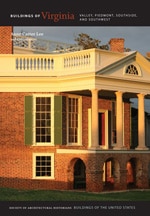Established in 1793, Brownsburg developed in linear fashion with most of its buildings along the main road (VA 252). This was one of the major routes south from Staunton, and the town prospered in the early nineteenth century when most of its Federal town houses were built. Martin's Gazetteer of Virginia of 1835 described it as having a population of 120 with some twenty houses. That may have been the high point of Brownsburg's population. The development of other roads and, in 1884, the Valley Railroad several miles to the east isolated the town, and as a result it exemplifies an early Shenandoah Valley town. One house form popular in Brownsburg is the double-pile, side-passage plan. Probably the finest is the brick Trotter-Fix House (1836; 22 Hays Creek Road). The side-passage brick Patterson-Coblentz House (1817; 2703 Brownsburg Turnpike) originally was single-pile until an addition added a second room and a kitchen. Next door, the brick Withrow House (c. 1820) is a traditional Valley single-pile, central-passage plan, but it has an unusual feature in its two front doors. All three of these houses are in Flemish bond and have molded brick cornices, features typical of early-nineteenth-century substantial dwellings in the Valley. One particularly fine stone house is Anderson Hollow at 2645 Sterett Road.
Writing Credits
If SAH Archipedia has been useful to you, please consider supporting it.
SAH Archipedia tells the story of the United States through its buildings, landscapes, and cities. This freely available resource empowers the public with authoritative knowledge that deepens their understanding and appreciation of the built environment. But the Society of Architectural Historians, which created SAH Archipedia with University of Virginia Press, needs your support to maintain the high-caliber research, writing, photography, cartography, editing, design, and programming that make SAH Archipedia a trusted online resource available to all who value the history of place, heritage tourism, and learning.

